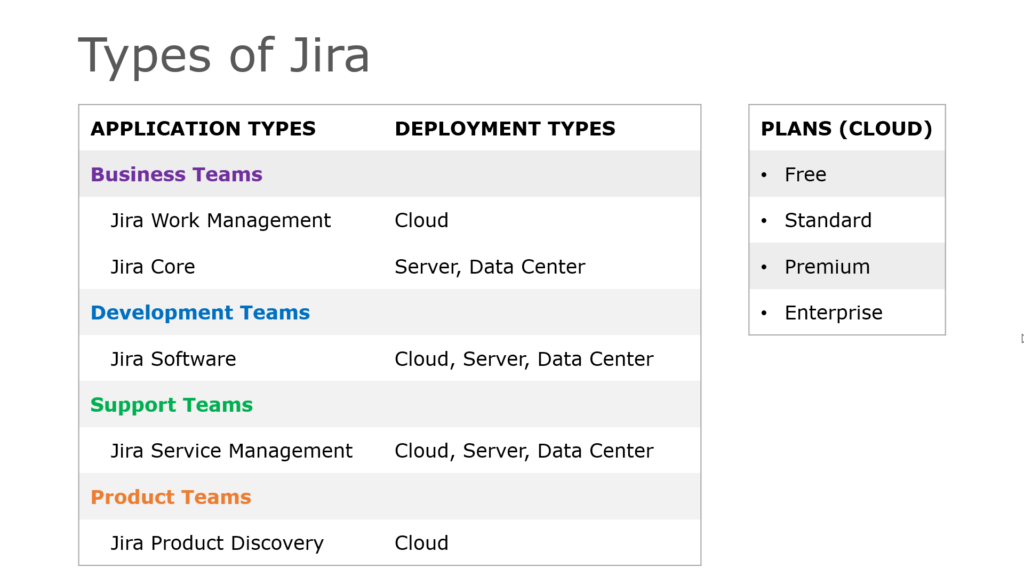Question
What is the difference between an Epic, Story, Task, and other issue types? Which Issue Types are standard and which are custom? Which issues types are added by Jira Service Desk?
Answer
An Issue Type is a way issues are classified in a Jira project. There are standard types that come with Jira and additional custom types.
Standard Issue Types
Jira Software comes with five standard issue types so issues can have different fields, different workflows, or both, within the same Jira project. For example, a Bug issue type might have defect-specific fields like “Steps to Reproduce” and “Expected Result.” Those two fields don’t belong on a screen for the Task issue type however.
Tip: I recommend every Jira project start off with Epic, Task, and Sub-task, regardless of the type of work tracked. Add additional standard and custom types when there’s a measurable business need.
|
Issue Type
|
Atlassian’s Definition
|
Rachel’s Notes
|
Example Issue Summary (Title)
|
|---|---|---|---|
| Task | Task that needs to be done | This is your generic “catch all” type. Use it for any type of work not represented by the other available types.Tip: Creating specifically named tasks (Ex: Security Task, Marketing Task, etc.) is not recommended. | Bake a cake |
| Sub-task | Smaller task within a larger piece of work | The smallest piece of work required to complete a larger piece of work. Often used to assign parts of a larger task to different team members. | Mix cake ingredients |
| Epic | Large piece of work that encompasses many issues | A term from “Agile” methodology but useful to any type of team, regardless of methodology.Tip: Link other issues to the Epic they support. | Make deserts for bake sale |
| Story | Functionality request expressed from the perspective of the user | AKA: “User Story” or other form of development request. Often used by software development teams to encompass requirements, features, or enhancements. Sometimes written in the format: As a <type of user>, I want <some goal> so that <some reason>. | As a bake sale attendee, I would like to eat brownies because I’m allergic to cakeOR
Make brownies for bake sale |
| Bug | Problem that impairs product or service functionality | Often used to track problems, errors, omissions, defects, or “things to fix”. | Cake is burnt |
Additionally, Jira Service Desk adds four more standard types for support projects.
|
Issue Type
|
Atlassian’s Definition
|
Example Issue Summary (Title)
|
|---|---|---|
| Incident | System outage or incident | The kitchen caught fire yesterday |
| Service request | General request from a user for a product or service | Fix microwave damaged during kitchen fire |
| Change | Rollout of new technologies or solutions | Change the gas stove to an electric hot plate |
| Problem | Track underlying causes of incidents | The electric hot plate doesn’t get hot enoughOR
Train users on gas stove safety |
Custom Issue Types
You may have additional custom types in your project’s selection list. These were either added by Jira administrators, by additional Jira functions, or by third party apps and add-ons.
For example, a Legal Jira project may have custom issue types like: Agreement or Contract. A Marketing Jira project may have: Campaign, Creative, or Design. A few custom issue types are expected, but Jira administrators should keep the list of choices as short as possible.
See also: Common Jira Terms and Concepts
Have a Question?
Use the “Ask a Question” form on the top right and we’ll answer it in a future post.


Pingback: Common Jira Terms and Concepts – Strategy for Jira®
Pingback: Common Jira Terms and Concepts - Strategy for Jira®